It’s no secret that I’m an egg fanatic (check my logo). They’re inexpensive, easy to cook, and so extremely versatile! My favorite budget meal hack has always been to just “put an egg on it.” And while soft boiled eggs might be my favorite, there are definitely times when a hard boiled egg just works better. So I wanted to do a quick tutorial on how to make hard boiled eggs so you can see just how quick and easy they are to incorporate into your meals!
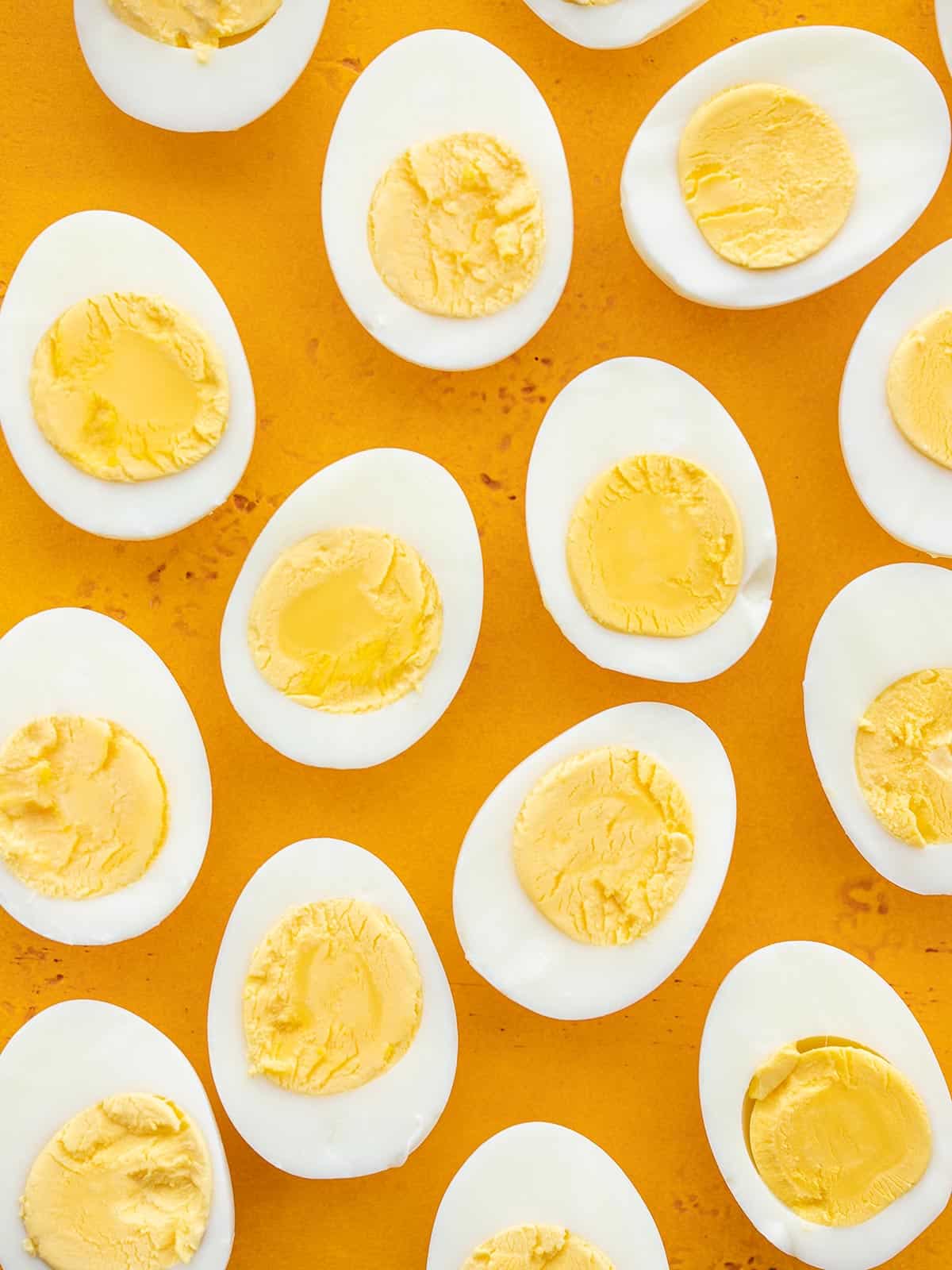
Let’s just get right to the nitty-gritty of what everyone wants to know…
How Long to Boil Eggs
The easy answer – boil large eggs for about 12 minutes to make hard boiled eggs.
The long answer – The amount of time needed to hard boil an egg can vary depending on several factors including, but not limited to:
- The size of the egg
- The type of cookware and stove top used
- The starting temperature of the egg
- The boiling method used (cold start, hot start, steaming)
- Your altitude
I’m going to provide a general guide below, but you’ll need to experiment a little to find the exact time needed to make perfect hard boiled eggs using your equipment, your eggs, and at your altitude.
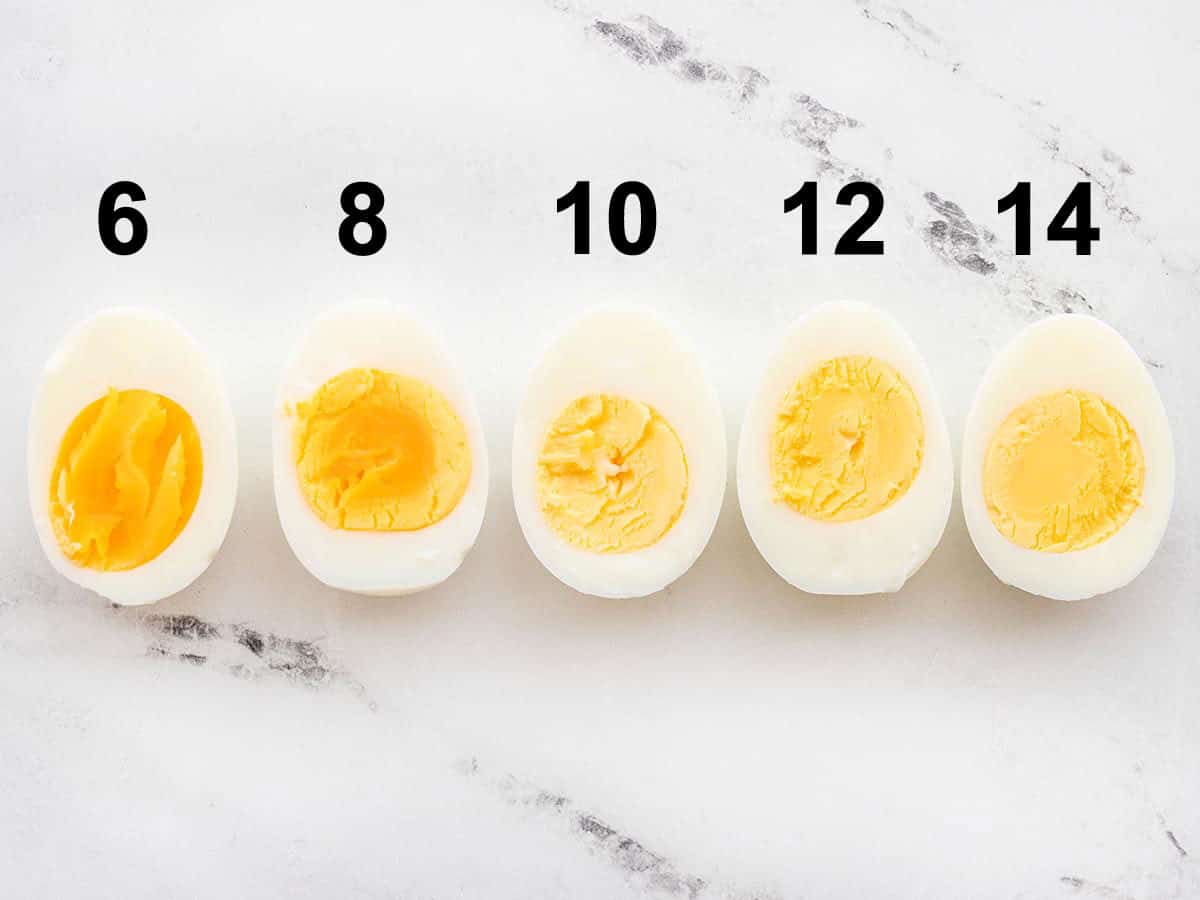
The image above shows my results after 6, 8, 10, 12, and 14 minutes.
- 6 minutes: nice jammy yolk
- 8 minutes: yolk is half set, half jammy
- 10 minutes: mostly set with a bit of wetness in the center of the yolk
- 12 minutes: completely solid yolk
- 14 minutes: solid yolk, not yet overcooked to the point of a green yolk
How to Boil Eggs – Step by Step Instructions
As mentioned above, there are actually several ways to make hard boiled eggs. I like the hot water bath method because it doesn’t require a lot of attention and it’s pretty forgiving if you can’t tend to the eggs right when your timer goes off. Here’s how it works:
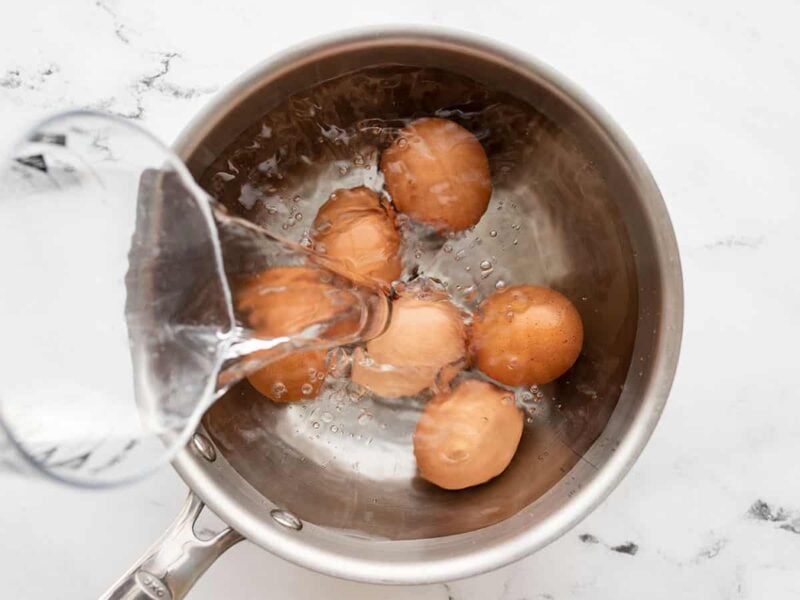
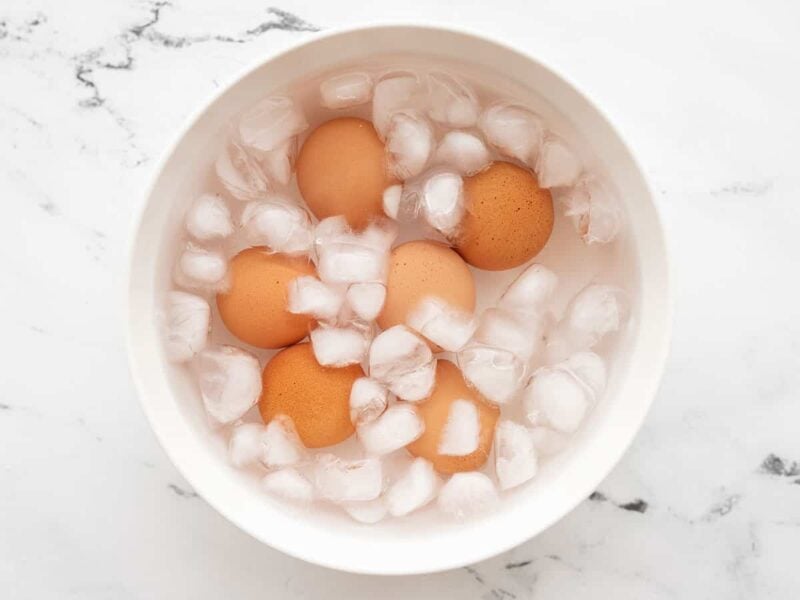
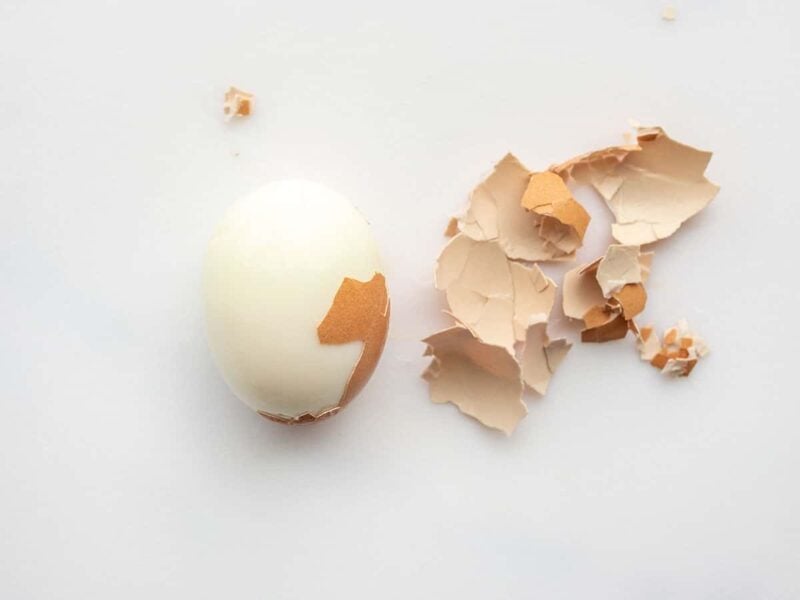
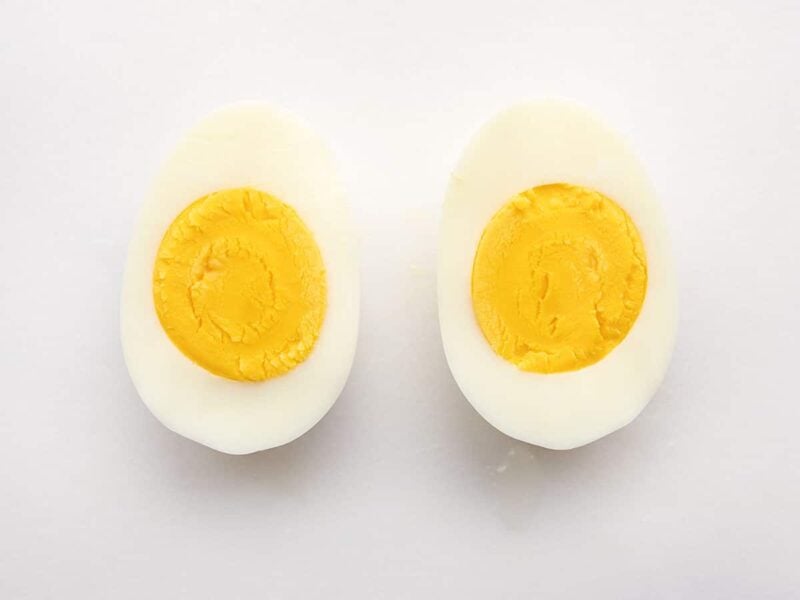
1. Add cold eggs to a pot and cover with water
Place cold, large eggs straight from the refrigerator into a saucepot in a single layer. Add enough water to cover the eggs by one inch.
2. Bring to a boil
Place a lid on the pot and bring the water up to a boil over high heat.
3. Turn off the heat
When the water reaches a full rolling boil, turn off the heat and leave the pot on the burner (lid still on). Let the eggs sit in the hot water for about 12 minutes. The water will slowly cool as they sit, which helps give you some flexibility before the eggs over cook (green-tinged yolk=over cooked egg).
4. Transfer eggs to ice bath
After 12 minutes, transfer the eggs to a bowl of ice water for about 5 minutes.
5. Peel and enjoy!
Hard Boil Eggs Using Steam
I also like to steam my eggs, as seen in my tutorial for 6-minute soft boiled eggs. This method is super fast because you only use about an inch of water, which comes to a boil very quickly. To make hard boiled eggs using the steaming method, simply let them steam for about 10-12 minutes. I also find that steamed eggs tend to peel very easily. See the steaming tutorial here.
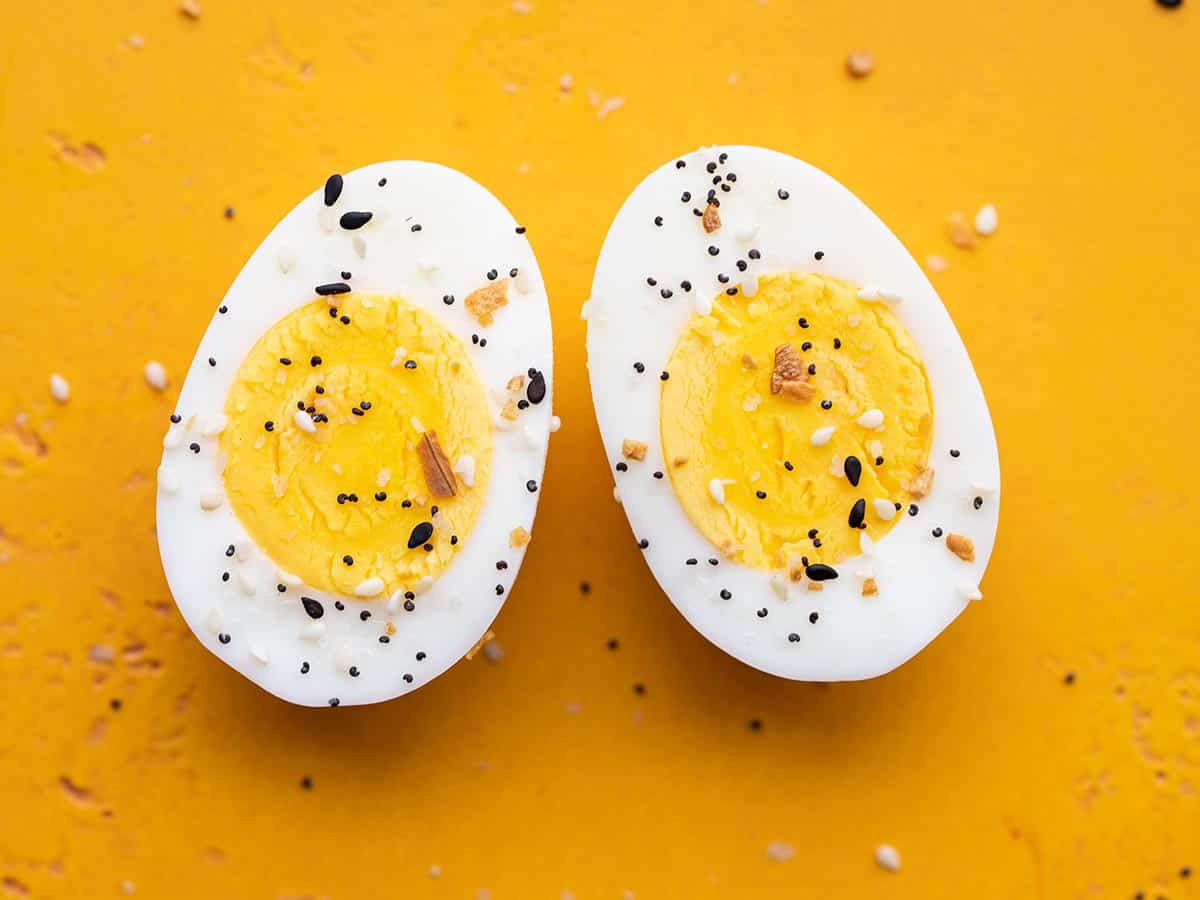
How Long Are Hard Boiled Eggs Good?
A hard boiled egg will stay good for about a week when refrigerated in their shell. A peeled hard boiled egg should be eaten within two days.
Tips for Peeling Hard Boiled Eggs
The internet is full of tips for making hard boiled eggs easy to peel. But I will be honest, I’ve tried them all and I haven’t found consistent results with any method. Sometimes even eggs within the same batch of hard boiled eggs will vary from impossible to peel to peeling effortlessly. That being said, I’m going to list all of the tips and tricks I’ve heard, if case you want to try them to see if any of them bring you success.
- Old eggs peel easier than fresh eggs
- Add cold eggs to boiling water instead of bringing them to a boil together (this tracks with my steamed eggs being easy to peel more often than not)
- Tap the egg on a solid surface, then gently roll to crack the shell on all sides before peeling
- Peel eggs under running water (the flow helps separate the white from the peel)
- After removing part of the shell, slide a spoon between the shell and egg white to separate them
- Place the eggs in a covered container and gently shake to crack the shells until they fall off
- Add baking soda to the water (about ½ tsp per pot)
Have you had success with any of these methods? Share which one works best for you in the comments below.
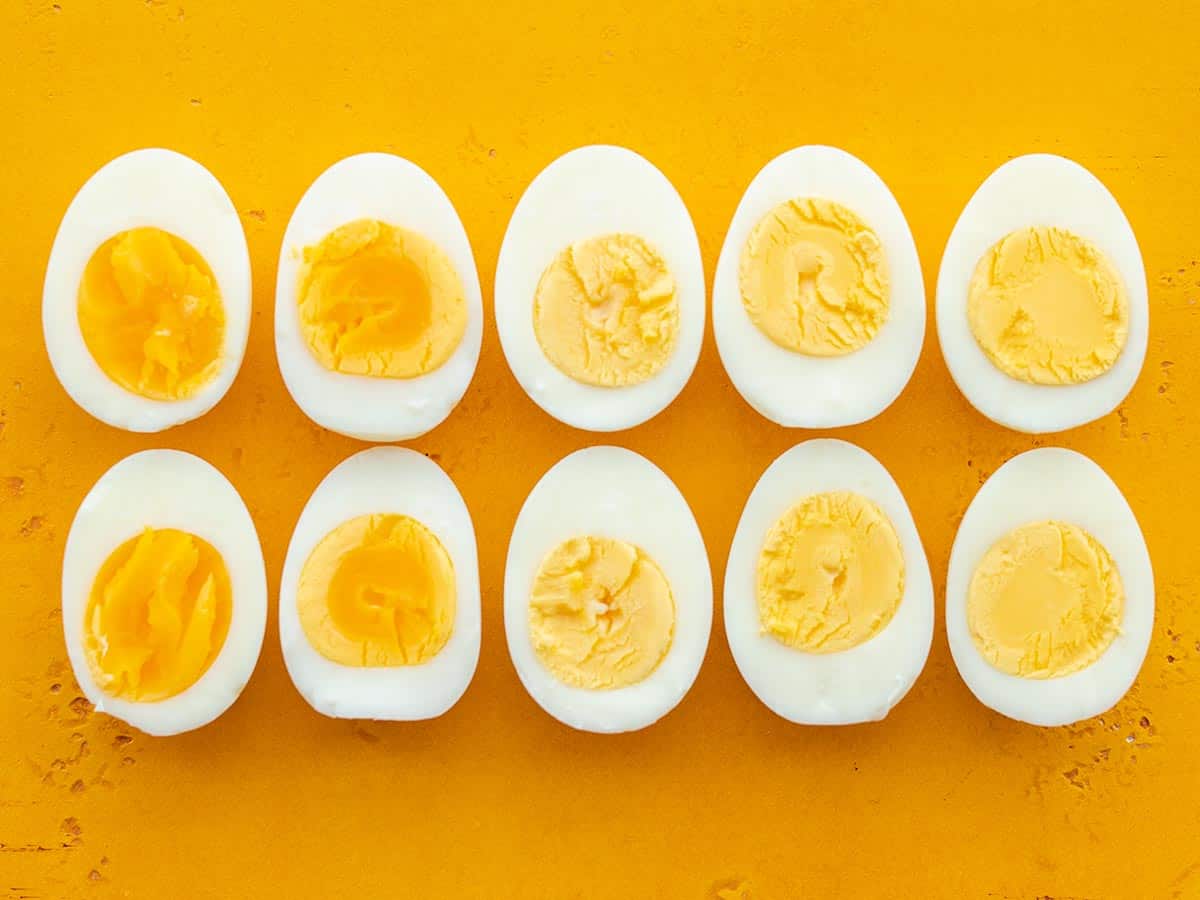
Recipes Using Hard Boiled Eggs
I add hard boiled eggs to just about everything. If you need a little inspiration for how to use your hard boiled eggs, here are a few hard boiled egg recipe ideas:
- Deviled Eggs (or Sriracha Deviled Eggs)
- Egg Salad
- Use a meal prep lunch box
- Add them to a breakfast bowl
- Add to Salads
- They make an interesting addition to guacamole or avocado dip
- Use in potato salad
- Add to a bowl of ramen
- Chop and stir into tuna salad
- Slice and add to avocado toast (I like to top with everything bagel seasoning and sriracha)
- Slice and add to a veggie sandwich
- Add to a bowl of savory oatmeal
How to Make Hard Boiled Eggs
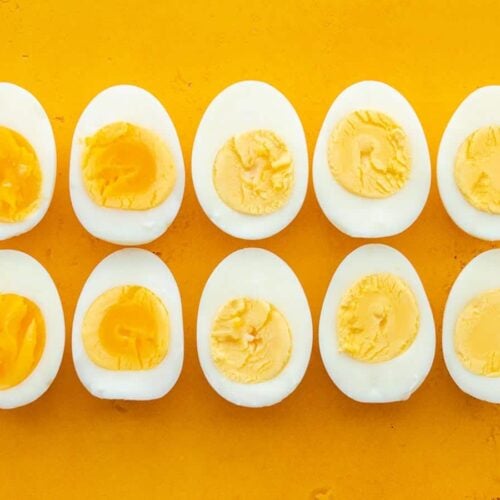
Ingredients
- 4 large eggs
Instructions
- Add cold eggs to a saucepot. Add enough water to the pot to cover the eggs by one inch.
- Place a lid on the pot and turn the heat on to high. Allow the water to come up to a boil.
- Once the water reaches a full rolling boil, turn the heat off and leave the pot on the burner (with the lid on) for about 12 minutes.*
- After 12 minutes, transfer the eggs to a bowl of ice water. Chill the eggs in the ice water for about five minutes. Peel and enjoy.
See how we calculate recipe costs here.
Video
Notes
Nutrition
More WAYS TO COOK EGGS
Looking for other ways to cook your eggs? Check out these other recipes:


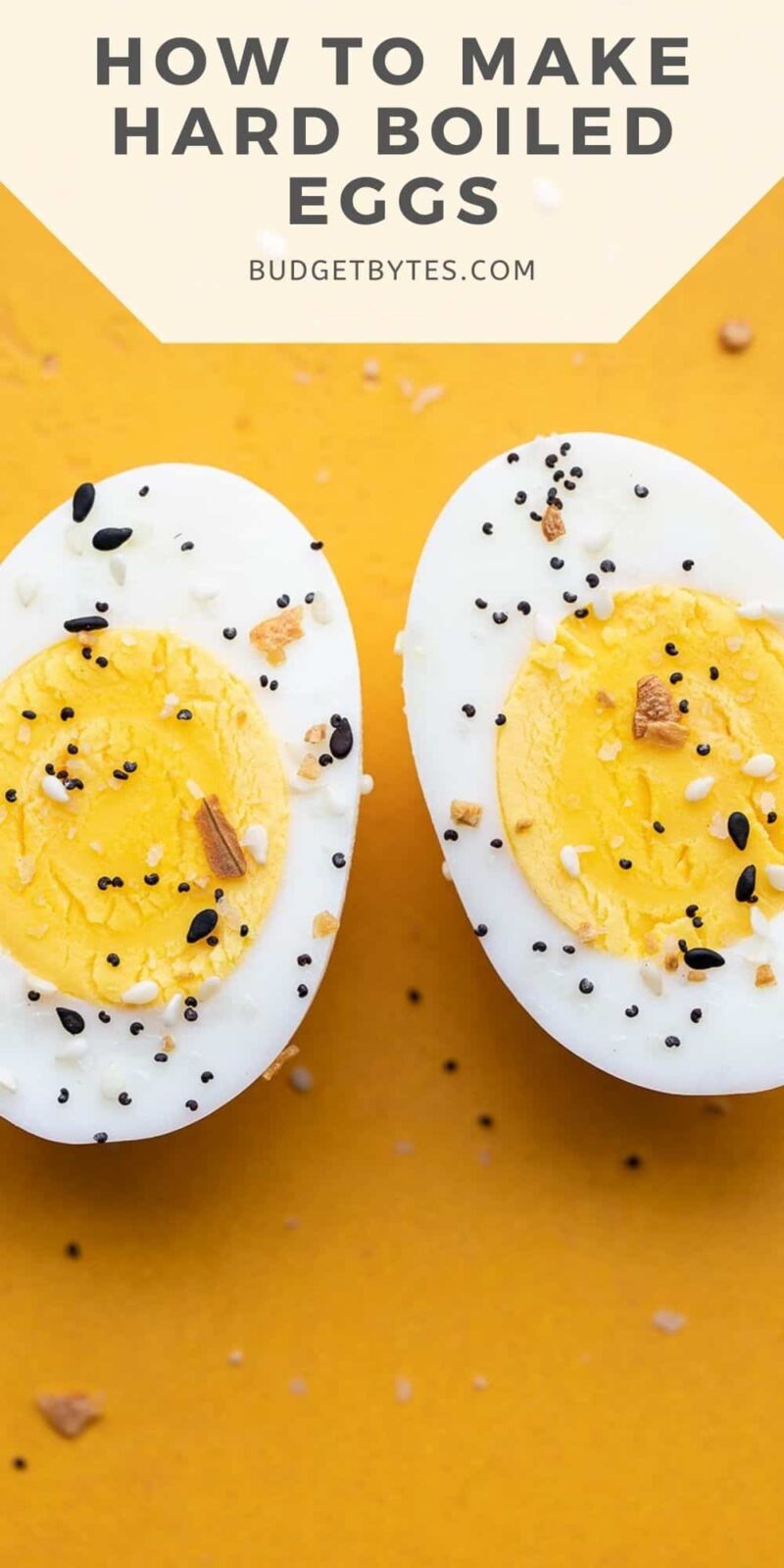
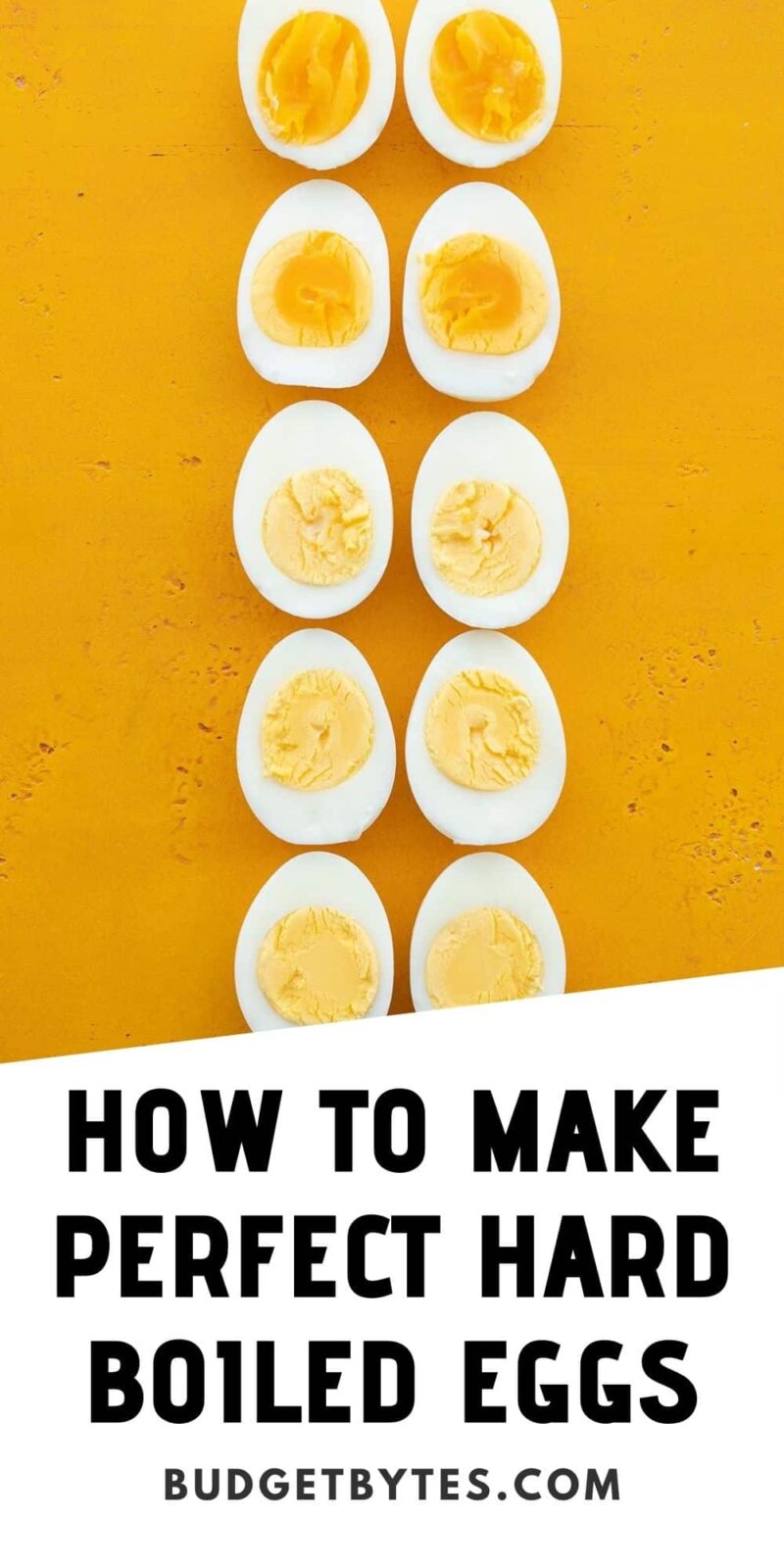
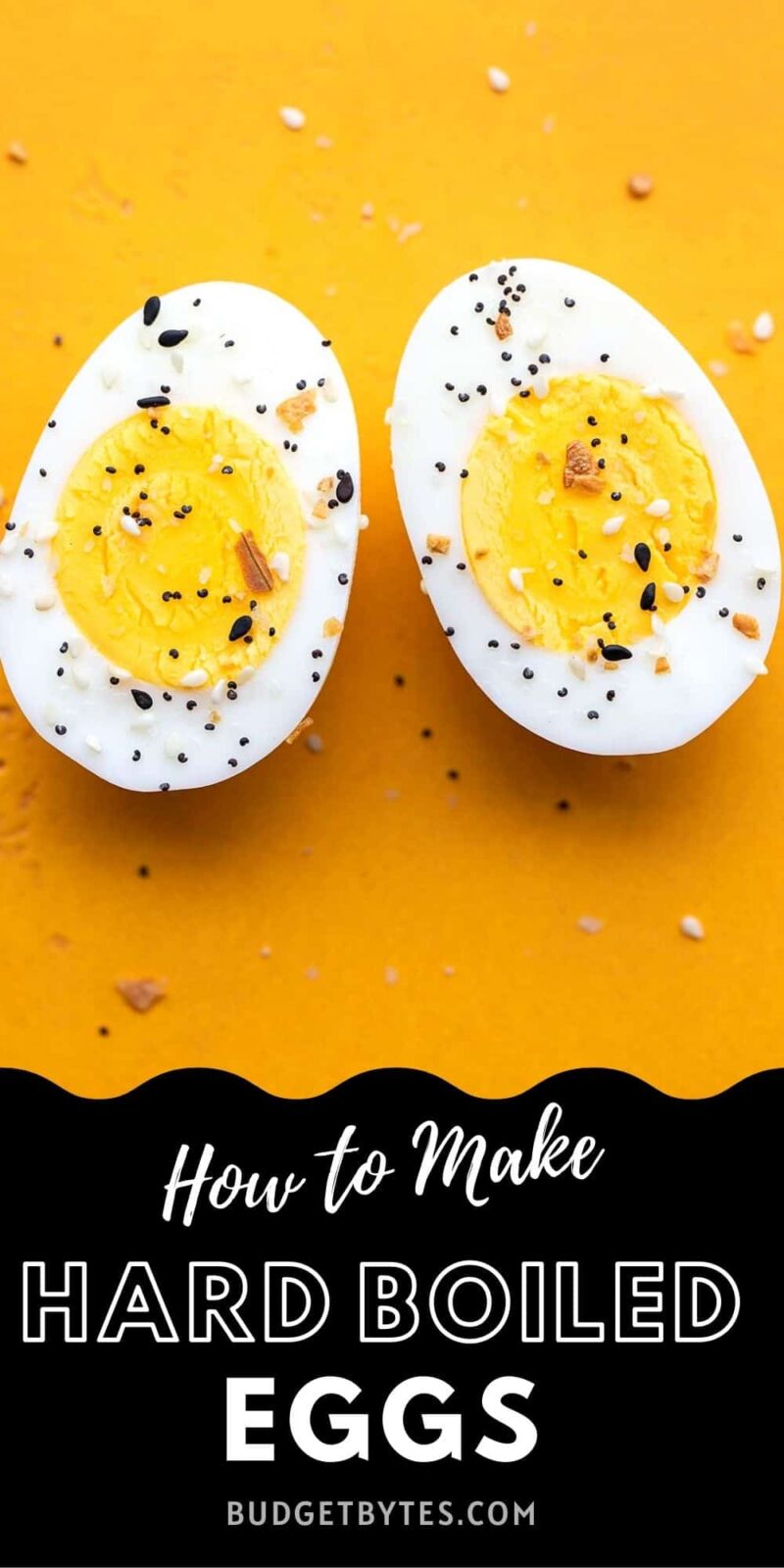
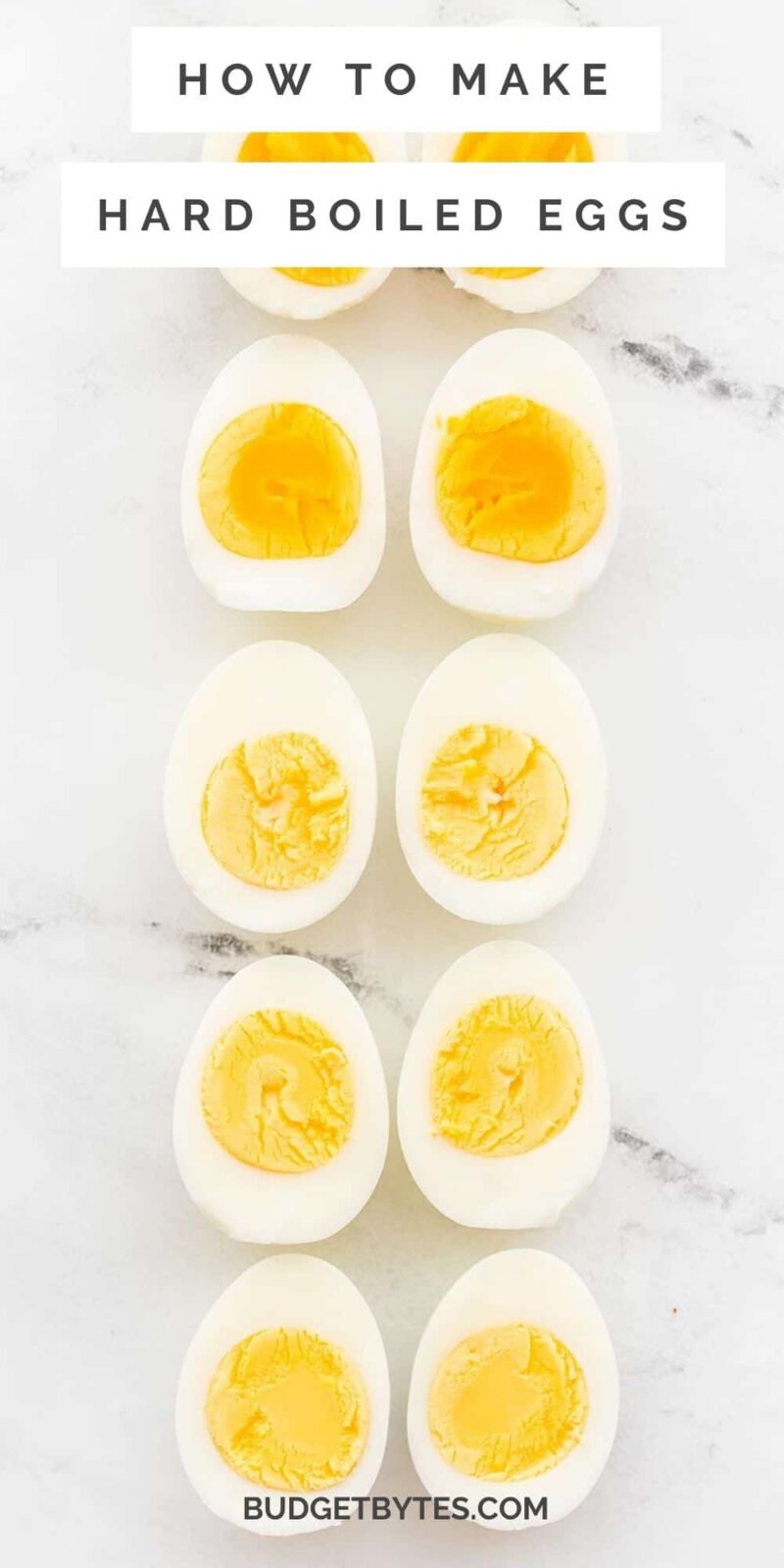
I have used your method and Julia Childs method. The eggs always cooks perfectly but can never peel them easily. even when trying baking soda. Shaking in a mason jar, running under water,rolling on the counter. The whites continue to stick to the shell. I use Wal Mart eggs as a disclaimer.
Thanks! Probably the best explanation on hard boiled eggs I have come across.
I love your steaming method for soft boiled eggs! It has worked fine everytime Imake them. The peeling part was kind of a pain so i take mine out of the cold water bath and just whack them in half in the middle with a dull knife and then scoop egg out with the knife or a spoon. It’s the first time in years I’ve gotten to make my soft boiled eggs and they come out perfect with no big hassle! Thank you!
The method of boiling the water, then turning the heat off and covering the pot with eggs has never, ever worked for me. I am curious about the steaming method and would like to try it!
For years I made hard boiled eggs in a pan on the stovetop. Last year I bought a “My Mini Egg Cooker” made by Nostalgia at Wal-Mart for around $9. It steams up to seven eggs in a couple ounces of water from a premeasured tiny cup. You pierce the egg with the pointed end of the cup. A little alarm beeps when the eggs are done. It also makes soft boiled eggs as well. The best part is the eggs are so easy to peel. The egg maker is small and retro cute so I leave it out on my counter. Best $9 I’ve spent.
I recently heard about adding baking soda when boiling eggs. When should it be added? Before, during or after boiling the eggs?
Before, you can stir it into the water. :)
Absolutely use OLDER eggs. I was glad to see you stating that! If you look at the end sale date of eggs, you will see they keep for a long time. No method really works for fresh eggs. I keep an extra dozen eggs in the bottom of my fridge so I always have some older ones. and use a push pin in the round end …. and have never had a problem pealing eggs.
Most of my life I’ve used the cold start, making them hella hard to peel, as testified to here. Now I bring water to boil before adding cold eggs. Start timer immediately and remove after 12 to 14 minutes of gentle boil. Cool in ice water and peel effortlessly with perfect results.
I recently tried hard-boiled eggs by steaming with a method very similar to Beth’s. It worked out tremendously well! I started the water to boil in my steamer pot, put the eggs in the steamer basket, and turned the heat down to medium low. Let them steam for 13 minutes and then put them in ice and water for 5 minutes. I then cracked them and rolled them between my hands. I’ve never had eggs peal so easily. The shells just fell off with very little effort. I’ll never use another method now.
When I worked in catering I often had to cook and peel 200 plus eggs. No time for fancy stuff, put in cold water, bring to the boil and cook for 10-12 minutes (depending on what else you were doing at the time!). Pour out the hot water, add cold and using both hands grab eggs and crack against the side of the pan. Change water again. Leave a while and then peel. Cracking the shells when warm make them much easier to peel.
Please don’t peel under running water, unless you save it to use for something else. I have been told that the water they’re boiled in is good for house plants once it’s cooled.
If you want to make egg mayonnaise, the easiest way is to grate them rather than trying to mush with a fork (traditional UK method) – a fork is OK if you’re just doing 1, but any more than that and a grater is much quicker and easier.
A second advocate for the Instant Pot method. They cook perfectly with little effort and peel super easily. I think this is because the pressure separates the membrane from the shell, but just my thought.
I put any number of eggs on the rack (I’ve done up to 24 for Easter and it still works). Add 1 cup water, close and seal, set for 7 minutes high pressure. Release immediately and put in cold water. Perfect eggs every time.
I poke the eggs with a sewing pin, at the top for a microscopic hole. helps it for peeling Then I do 12 minutes from a cold start, at around having 5 minutes left on the clock, is when the water starts to be at a rolling boil. I’ll turn it down to medium until the timer goes off, then scoop the eggs out to cool.
I do mine in the instant pot and have never looked back. The 6-6-6 method works every time smile
I make them in my instant pot all the time. It’s the easiest method. I use the 5-5-5 method (I’m at elevation), this keeps me from getting the dreaded gray/green ring around the yolk.
I add a splash of white vinegar to the water before boiling eggs. It seems to help keep the membrane stuck to the shell rather than the egg white, which makes peeling simpler.
Adam Liaw shows the correct way to boil an egg to get the shell to come off easily every time. Puncture the round end of the egg with something no bigger than a push pin or tack, you don’t need to go in very far just break the shell. The shell shouldn’t crack when you do this. Then place the eggs into boiling water and cook for the desired time, stirring them for the first 20-30 seconds as you put the eggs in, in order to let the boiling water circulate into the small hole you’ve poked. When your timer dings place them into an ice bath and stir the ice water some as you place them in, this once again allows for the water to push into the egg, which will help pull the membrane away from the shell. I’ve used this ever since seeing Adam’s video and it’s 100% reliable.
https://www.youtube.com/watch?v=F9IepMO2DIc The video in which he covers the technique